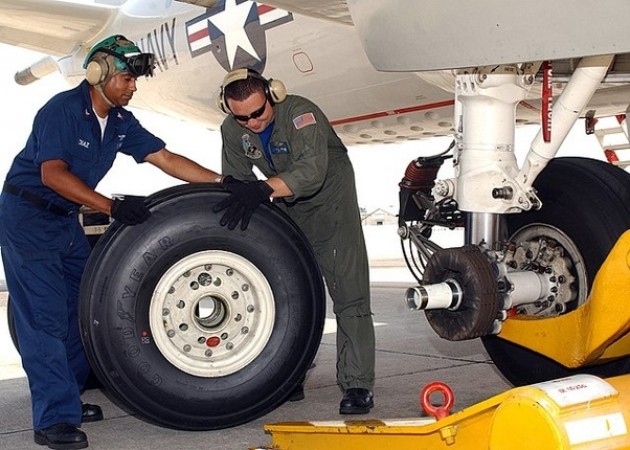
Airplane tires play a pivotal role in ensuring the safe landing of aircraft traveling at speeds ranging from 250 to 270 kilometers per hour. These tires are designed and built with utmost durability and reliability in mind, considering the immense forces and speeds they endure during landings and take-offs.
High Pressure for Strength
One of the key characteristics of airplane tires is their high pressure rating. Typically, these tires are inflated to pressures around 200 pounds per square inch (psi). Unlike conventional vehicle tires that use compressed air, airplane tires are filled with nitrogen. This choice of gas helps to maintain a more stable pressure over a wide range of temperatures and reduces the risk of moisture accumulation within the tire, which could affect performance and safety.
Weight Tolerance
Airplane tires are engineered to withstand substantial weights. Each tire can handle pressures up to 800 psi without compromising safety. This capability is crucial for supporting the weight of the aircraft during landing, where the tires experience significant loads and stresses. To enhance their resilience, these tires are also equipped with flexible plugs that prevent nitrogen from leaking out. This feature ensures that the tire maintains its optimal pressure, reducing the risk of blowouts or failures during critical operations.
Preventing Accidents
The integrity of airplane tires is paramount to aviation safety. The use of nitrogen and the inclusion of flexible plugs serve as vital safety measures. By minimizing the potential for pressure loss, these features drastically reduce the likelihood of tire-related accidents during landing or take-off. This aspect is particularly crucial in ensuring the smooth and safe operation of commercial and private flights worldwide.
Adjusting for Weight
The weight of an aircraft can vary significantly depending on factors such as passenger load, cargo, and fuel capacity. To accommodate varying weights, aircraft are equipped with a variable number of tires. Larger or heavier aircraft may require additional tires to distribute the weight evenly across the landing gear. This practice ensures that each tire operates within its optimal load capacity, thereby enhancing overall safety and performance during ground operations.
Cost Considerations
The cost of airplane tires is another significant aspect of their use and maintenance. A single airplane tire can cost up to ₹80,000, depending on the manufacturer and specific design requirements. This cost reflects the high-quality materials and advanced engineering that go into producing tires capable of meeting stringent aviation standards. Despite the expense, airlines and aircraft operators prioritize tire quality and reliability to minimize operational disruptions and ensure passenger safety.
In conclusion, airplane tires are not just rubber wheels but highly specialized components critical to aviation safety and performance. Their ability to withstand high pressures, accommodate varying weights, and maintain integrity under challenging conditions underscores their importance in modern aviation. By investing in high-quality tires and adhering to rigorous maintenance protocols, airlines and aircraft operators worldwide uphold the highest standards of safety and operational efficiency in air travel.
Read the review of Mahindra Scorpio N Z8 Select Automatic, best deal at price!
See the first glimpse of Vinfast VF e34, know when will it hit the Indian market?
Renault's new Hot-Hatch electric car launched, will get a range of 380 km